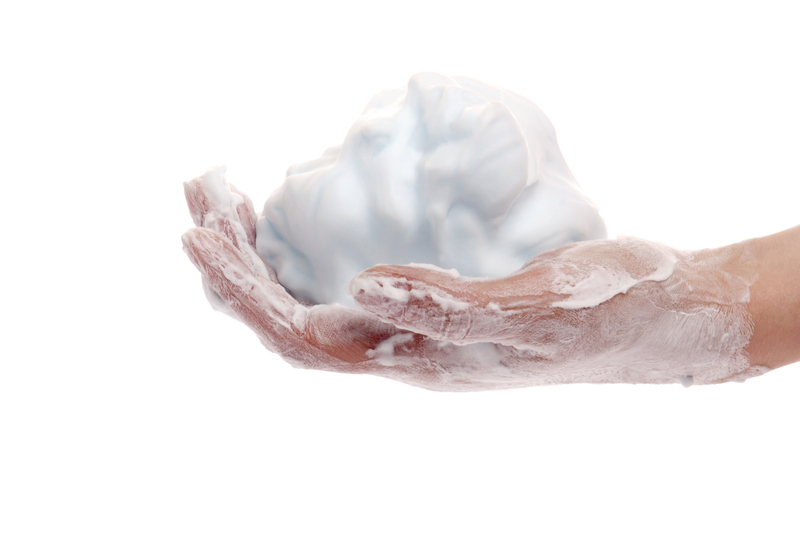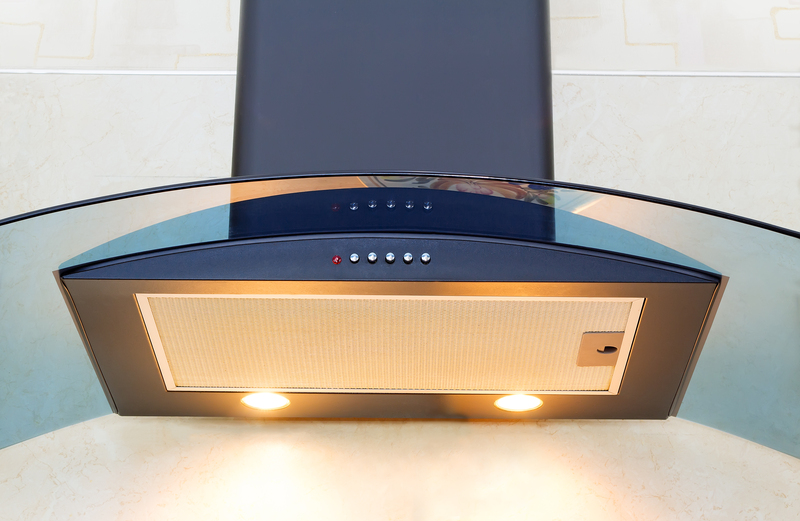Discover How to Effectively Clean Burnt-on Residue from Stovetops
Posted on 23/05/2025
Discover How to Effectively Clean Burnt-on Residue from Stovetops
If you love cooking, your stovetop is likely one of the hardest-working appliances in your kitchen. Over time, it's inevitable that you'll encounter stubborn, burnt-on residue that seems impossible to remove. Fear not! Learning how to clean burnt-on residue from stovetops doesn't have to be a daunting task. In this comprehensive guide, we'll reveal step-by-step methods, handy tips, and the best products to transform your stove from grimy to gleaming, no matter the mess.

Understanding Stovetop Surfaces and Residue Types
Before tackling the grime, it's essential to know your stovetop type and the nature of the residue. Different materials require different approaches for cleaning burnt-on food particles effectively and safely.
Common Stovetop Materials
- Glass & Ceramic Stovetops: Sleek but prone to scratches. Require gentle, non-abrasive cleaners.
- Stainless Steel Stovetops: Durable but show fingerprints and stains easily. Can withstand slightly more robust cleaning methods.
- Gas Burners (Enamel or Cast Iron Grates): Removable parts; often have multiple layers of burnt residue.
Tip: Always check your manufacturer's manual before using any cleaning technique, especially for specialty or high-end stovetops.
Types of Burnt-on Residue
- Food Spills: Boiled-over milk, sauces, and sugars can leave sticky, burnt caramelized messes.
- Grease Splatters: Accumulate over time, especially around burners.
- Carbonized Buildup: Layers of burned food and oil, usually found on less frequently cleaned stovetops.
Essential Tools and Ingredients for Stovetop Cleaning
Gathering the right supplies is half the battle. To remove burnt-on residue from stoves efficiently, embrace a combination of store-bought products and tried-and-true household ingredients:
- Baking soda
- White vinegar
- Lemon juice
- Dish soap (preferably degreasing formula)
- Non-scratch scrubbing pads or sponges
- Plastic scraper or old credit card
- Microfiber cloths
- Razor blade scraper (for glass stovetops only)
- Gloves (optional)
Step-by-Step Guide: How to Clean Burnt-on Residue from Different Types of Stovetops
1. Safety First: Prepare Your Stove
- Allow your stovetop to cool completely before cleaning to prevent burns.
- If removable, take off burner grates, knobs, or covers for separate cleaning.
- Wipe away loose debris and crumbs.
2. The Gentle Approach: Baking Soda and Vinegar Method
One of the most effective and eco-friendly methods for tackling stubborn burnt food stains on stovetops is the classic baking soda and vinegar combo.
- Sprinkle baking soda over the affected areas to form a generous layer.
- Spray or drizzle white vinegar on top. The mixture will fizz, loosening burnt-on gunk.
- Cover with a warm, damp cloth and let sit for 15-20 minutes for maximum effect.
- Gently scrub with a non-abrasive sponge or plastic scraper. Repeat as needed for tough spots.
- Wipe clean with a microfiber cloth, rinsing away all residue.
Pro tip: For extra tough stains, leave the baking soda paste on overnight (dampened with vinegar) before scrubbing.
3. Dish Soap Degreaser for Oily Buildup
Degreasing dish soap can break down layers of sticky or oily burnt-on food:
- Mix a few drops of dish soap with hot water in a spray bottle.
- Liberally spray the solution onto greasy, burnt spots on the stovetop.
- Let it soak for 10-15 minutes.
- Use a microfiber cloth or non-scratch sponge to scrub residue.
Tip: For even better results, use a small brush (like an old toothbrush) to get into corners and around burner knobs.
4. How to Remove Burnt-on Residue from Glass or Ceramic Stovetops
- After using the baking soda and vinegar method, stubborn burnt rings may still remain.
- Carefully use a razor blade scraper held at a 45-degree angle to gently lift off residue. Always move the blade in one direction and avoid scraping in circles.
- Wipe clean, then polish with a dry microfiber cloth for streak-free shine.
Warning: Never use steel wool or harsh scouring pads, as they can scratch and ruin glass or ceramic stovetop surfaces.
5. Effective Methods for Cleaning Stainless Steel and Gas Cooktops
- Baking Soda Paste: Mix baking soda with a little water to form a thick paste. Apply directly to burnt-on stains, let sit for 20 minutes, then scrub with a non-abrasive pad.
- Lemon Juice for Shine: After cleaning, use a cloth dampened with lemon juice to wipe the surface, removing water spots and leaving a pleasant scent.
- Soak Removable Parts: Burners and grates can often be soaked in a sink filled with hot, soapy water and baking soda. After 30 minutes, scrub with a stiff brush.
Did you know? Regular buffing with a dry cloth can help prevent fingerprint stains on stainless steel.
Product Recommendations for Tackling Burnt-on Messes
If you prefer commercial solutions for cleaning cooked-on or scorched residue from stove surfaces, consider these highly rated products:
- Bar Keepers Friend Cooktop Cleaner: Excellent for glass and ceramic surfaces.
- Weiman Cooktop and Stovetop Cleaner Kit: Comes with a gentle scrubber and non-toxic cleaning solution.
- Easy-Off Kitchen Degreaser: Effective for heavy grease and burnt food on gas stovetops.
Always test products in a small, inconspicuous area first, and follow manufacturer instructions.
Frequently Asked Questions: Cleaning Burnt-on Food from Stovetops
How can I prevent burnt-on residue in the future?
- Wipe spills immediately: Dealing with messes while they're still warm (but not hot) makes cleanup much easier.
- Use burner liners: These disposable covers can catch spills and simplify cleanup.
- Regular cleaning: Incorporate a quick daily wipe-down using vinegar and water to prevent buildup.
Is it safe to use oven cleaner on my stovetop?
Oven cleaner is generally not recommended for most stovetops, especially glass or ceramic models, as it can damage the finish. Only use oven cleaner if the manufacturer explicitly advises it.
What if stains won't come off?
Persistent stains may require multiple cleaning cycles or, in rare cases, professional cleaning. Avoid using sharp metal tools or abrasive powders, as these can cause permanent damage to your stovetop.
The Science Behind Why Burnt-on Residue is So Hard to Clean
When food burns on the stove, proteins, sugars, and fats undergo chemical changes--caramelizing or carbonizing into stubborn, sticky adhesives. Heat literally bonds particles to the surface, making them resistant to water and light scrubbing. Acidic (vinegar, lemon) or alkaline (baking soda) solutions help break these bonds for easier removal.

Your Ultimate Cleaning Schedule for a Sparkling Stovetop
- Daily: Wipe with a soft, damp cloth after each use to prevent light soiling from becoming baked-on grime.
- Weekly: Conduct a more thorough cleaning, targeting burner rings and knobs with soapy water and a brush.
- Monthly: Deep clean with baking soda or a commercial stovetop cleaner, addressing any hidden buildup beneath removable parts.
Final Tips for Safe and Effective Stovetop Cleaning
- Wear gloves if you have sensitive skin or are using commercial products.
- Never mix cleaning chemicals (like bleach and ammonia). This can create toxic fumes.
- Ventilate your kitchen when cleaning to ensure good airflow.
- Be patient! Some burnt-on messes take time and repeated effort to remove completely.
In conclusion, learning how to clean burnt-on residue from your stovetop is a skill that pays off in both kitchen hygiene and long-lasting appliances. With the right methods, supplies, and a little bit of patience, you can restore even the dirtiest stove to sparkling condition. Make stovetop care part of your regular cleaning routine to save effort--and enjoy your cooking space to the fullest!
Ready to tackle your stovetop? Grab your supplies, pick your preferred cleaning method, and banish burnt-on residue for good!




